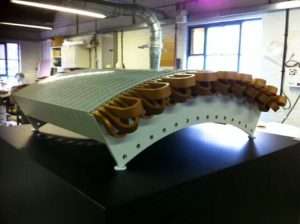
To understand prototype production you would first need to understand exactly what a prototype is.
- A prototype is an original production of something.
- It is the model or the example for a product that has been designed but not produced for use.
- It is the basic example of things to be created and it is intended to be enhanced upon if necessary.
Why create a prototype?
Many fields are very unsure about how a finished product will turn out or if it will function correctly, once it has been produced. Rather than jump in and produce a large volume of these items, a prototype is created. This prototype is tested to ensure that the design functions properly and that it can be effective in the purpose it was designed for.
Prototypes can also be used to test consumer interest. If a new product has been developed and the developer wants to see if this is something that will spark interest among those that would purchase it, they create a prototype and put it out for consumer review. This allows them to make improvements that will make it more appealing to the public or to move forward with production knowing that it will be successful.
As alterations are made and the product becomes closer to being ready to be released on a larger scale, it is common for a prototype to be expanded upon or simplified based on the needs of the user. When the engineers and designers have a prototype to work from they are able to identify the problems and make alterations before releasing the prototype for review as well.
Prototype identifiers
It is common to assign an identifier to the prototype to identify them from other prototypes. The original is typically called an alpha prototype. This initial prototype is developed with the expectations that there will be something that needs changed. The prototypes that are created from revised copies of the original are often labelled Beta, Gamma, and so on. Each new prototype is expected to be one step closer to a product that will do just as it is designed to.
When creating a production prototype there are several things that must be incorporated that may not be necessary for a prototype that is not intended for production. For example, when a product is designed for industrial use, you may require a more expensive type of material to make it. It is not cost effective to use the actual materials for a prototype so the engineers will use a material that is less expensive but that have similar properties as the actual materials to create the prototype.
The processes that are used to create the final product for some items are very costly as well. When a prototype is developed, the engineers will use a process that is less costly and that will result in a product that is similar to the expected final results. This is also true of the fine details that are on the product. The design details, as far as those that make it visually appealing, are not essential when testing the product for effectiveness so they are often times left off the prototype.
This provides a cost effective way to tweak the product and the process to ensure success for the final product. There are obviously many benefits to using a prototype to identify any changes that need to be made to a product prior to releasing it for mass production.